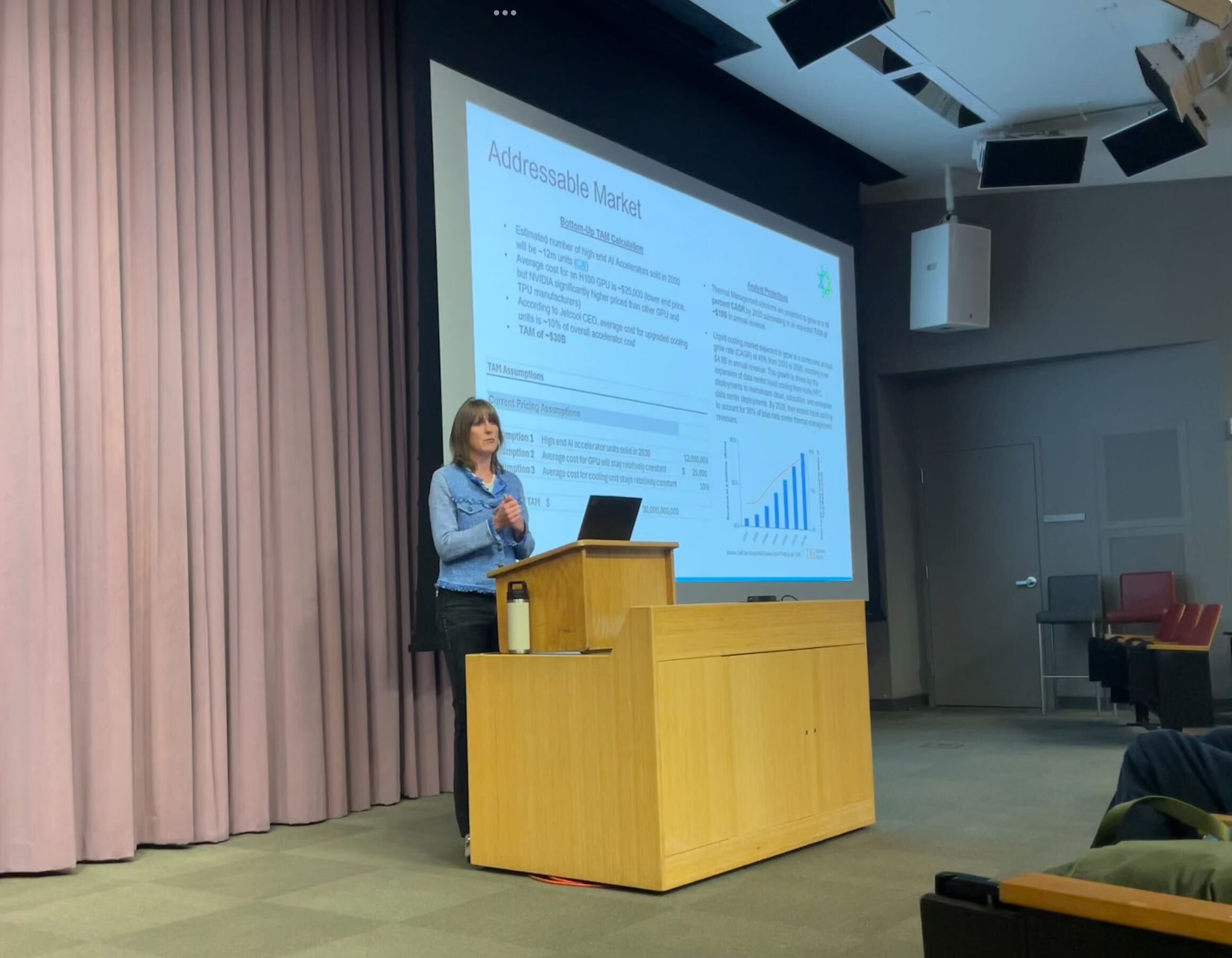UK economy posts surprise 0.3% growth in three months to June – The Guardian

UK Economic Performance and Sustainable Development Goal (SDG) Implications: Q2 Report
Executive Summary
This report analyses the United Kingdom’s economic performance for the second quarter, based on figures from the Office for National Statistics (ONS). While Gross Domestic Product (GDP) growth surpassed forecasts, a notable slowdown highlights challenges to achieving sustained and inclusive economic progress as outlined in the Sustainable Development Goals (SDGs), particularly SDG 8 (Decent Work and Economic Growth).
Economic Growth Analysis in Context of SDG 8
Quarterly GDP Performance
The UK economy’s performance presents a mixed outlook for SDG 8, which promotes sustained, inclusive, and sustainable economic growth. While growth avoided contraction, its deceleration raises concerns about long-term stability and the capacity to create decent work for all.
- Q2 Growth: GDP expanded by 0.3%, a significant slowdown from the 0.7% growth recorded in the first quarter.
- Forecast Comparison: This figure exceeded the 0.1% growth forecast by City economists and the Bank of England.
- Monthly Fluctuation: After contractions in April (-0.1%) and May, the economy recovered with 0.4% growth in June, indicating underlying volatility.
Sectoral Contributions and Alignment with SDG 9
Industry, Innovation, and Infrastructure
Sectoral performance indicates progress in areas related to SDG 9 (Industry, Innovation, and Infrastructure), although a sharp decline in business investment poses a significant threat to future resilience and innovation.
- Services Sector: The dominant services sector grew by 0.4%, led by activities in computer programming and health, which are crucial for an innovative economy.
- Construction Output: A 1.2% rise in construction, supported by large infrastructure projects, directly contributes to the targets of SDG 9.
- Manufacturing: The sector grew by 0.3%, demonstrating resilience despite global trade uncertainties.
- Business Investment: A concerning 4% fall in business investment was recorded in the second quarter. This decline directly undermines the capacity for innovation and infrastructure upgrades essential for achieving SDG 9.
Policy Challenges and Broader SDG Implications
Fiscal Policy and Socio-Economic Stability
The current economic landscape is shaped by domestic and international policy decisions that have direct implications for SDG 1 (No Poverty), SDG 10 (Reduced Inequalities), and SDG 17 (Partnerships for the Goals).
- Global Trade Environment (SDG 17): International trade disputes create an unstable global economic environment, hindering the global partnerships necessary for sustainable development.
- Domestic Fiscal Pressures (SDG 1 & 10): The government faces a significant budget deficit, fueled by higher debt interest payments and policy changes on welfare. Potential tax increases and a focus on productivity are central to the Chancellor’s agenda, with the stated aim of creating “an economy that works for working people,” aligning with the principles of reducing inequality.
- Business Environment: Business leaders have cited increased tax burdens as a challenge for small- and medium-sized enterprises (SMEs), which are vital for inclusive growth and job creation under SDG 8.
Monetary Policy and Future Outlook
The stronger-than-expected growth complicates the Bank of England’s monetary policy decisions. Balancing the need to control inflation with fostering a stable economic environment for sustainable growth remains a key challenge. The expected slowdown in the second half of the year necessitates policy frameworks that prioritise long-term resilience and alignment with the Sustainable Development Goals over short-term metrics.
Analysis of Sustainable Development Goals (SDGs) in the Article
1. Which SDGs are addressed or connected to the issues highlighted in the article?
-
SDG 8: Decent Work and Economic Growth
The entire article is centered on the economic performance of the UK. It discusses Gross Domestic Product (GDP) growth rates, the performance of various economic sectors (services, construction, manufacturing), and the challenges to sustained growth, such as tax policies and global trade issues. The chancellor’s goal to create “an economy that works for working people” and to fix the country’s productivity record directly aligns with the core principles of SDG 8, which aims to promote sustained, inclusive, and sustainable economic growth, full and productive employment, and decent work for all.
-
SDG 9: Industry, Innovation and Infrastructure
The article mentions specific sectors contributing to economic activity. It notes that “Construction output rose by 1.2%, supported by large infrastructure projects,” which directly relates to the infrastructure component of SDG 9. Furthermore, the discussion of the manufacturing sector’s growth and the services sector being driven by “computer programming” touches upon the industry and innovation aspects of this goal.
2. What specific targets under those SDGs can be identified based on the article’s content?
-
Target 8.1: Sustain per capita economic growth
This target aims to sustain economic growth in accordance with national circumstances. The article is fundamentally about measuring and analyzing this growth. It provides specific figures, stating that “growth in gross domestic product slowed to 0.3% in the three months to the end of June, down from a rate of 0.7% in the first quarter.” The comparison of the UK’s performance to other G7 nations (“the UK currently remains the fastest-growing G7 economy over the first half of the year”) also underscores the focus on this target.
-
Target 8.2: Achieve higher levels of economic productivity
This target focuses on increasing economic productivity through diversification and technological upgrading. The article explicitly highlights this as a key policy objective. It mentions that the chancellor, Rachel Reeves, has “pledged to use the set-piece fiscal event to prioritise fixing Britain’s dismal productivity record.” This statement directly connects the economic challenges discussed to the goal of improving productivity.
-
Target 8.3: Promote policies that support small- and medium-sized enterprises (SMEs)
This target encourages the growth of micro-, small-, and medium-sized enterprises. The article points to the difficulties these businesses face, quoting the British Chambers of Commerce: “Tax burdens at home, alongside uncertain global trading conditions, created a very challenging environment for the UK’s small- and medium-sized enterprises in the second quarter.” This highlights the relevance of policies affecting the health and growth of SMEs.
-
Target 9.1: Develop quality, reliable, sustainable and resilient infrastructure
This target is concerned with infrastructure development to support economic growth. The article directly supports this by noting that a rise in construction output was “supported by large infrastructure projects,” indicating that infrastructure investment is a component of the economic activity being measured.
3. Are there any indicators mentioned or implied in the article that can be used to measure progress towards the identified targets?
-
Indicator: Annual growth rate of real GDP
This is a direct indicator for Target 8.1. The article is replete with data on GDP growth, such as the quarterly growth rate of 0.3%, the previous quarter’s rate of 0.7%, and the monthly growth of 0.4% in June. These figures are the primary metrics used in the article to assess the economy’s health.
-
Indicator: Economic Productivity
While a specific figure for productivity growth is not provided, it is clearly identified as a key performance indicator for the UK economy. The chancellor’s pledge to fix the “dismal productivity record” implies that this is a critical metric being monitored by the government to measure progress towards Target 8.2.
-
Indicator: Business Investment Rate
This serves as an implied indicator for the health of enterprises, relevant to Target 8.3. The article states that “business investment fell by 4% in the second quarter.” This metric reflects the confidence and growth capacity of businesses, including SMEs, and is a tangible measure of the “challenging environment” they face.
-
Indicator: Output of the construction sector
This can be seen as an indicator for Target 9.1. The article provides a specific figure: “Construction output rose by 1.2%.” This directly measures activity in the infrastructure-related sector, providing a quantifiable measure of progress.
4. Summary Table of SDGs, Targets, and Indicators
| SDGs | Targets | Indicators |
|---|---|---|
| SDG 8: Decent Work and Economic Growth | Target 8.1: Sustain per capita economic growth. | Annual growth rate of real GDP: The article cites specific figures like 0.3% growth in the second quarter and 0.7% in the first quarter. |
| SDG 8: Decent Work and Economic Growth | Target 8.2: Achieve higher levels of economic productivity. | Economic Productivity: Implied as a key metric through the chancellor’s pledge to fix the “dismal productivity record.” |
| SDG 8: Decent Work and Economic Growth | Target 8.3: Promote policies that support small- and medium-sized enterprises (SMEs). | Business Investment Rate: The article states that “business investment fell by 4% in the second quarter,” indicating the health of the business environment for SMEs. |
| SDG 9: Industry, Innovation and Infrastructure | Target 9.1: Develop quality, reliable, sustainable and resilient infrastructure. | Output of the construction sector: The article mentions that “Construction output rose by 1.2%, supported by large infrastructure projects.” |
Source: theguardian.com

What is Your Reaction?
 Like
0
Like
0
 Dislike
0
Dislike
0
 Love
0
Love
0
 Funny
0
Funny
0
 Angry
0
Angry
0
 Sad
0
Sad
0
 Wow
0
Wow
0

















































:focal(1500,1000)/https://media.globalcitizen.org/a6/9a/a69a4720-d8a1-4715-b596-18738d03c05c/rotary_polio_hero_image.jpg?#)






/countries/sri-lanka/photo-credit---dmc-sri-lanka.tmb-1200v.jpg?sfvrsn=dc298bcc_1#)
















